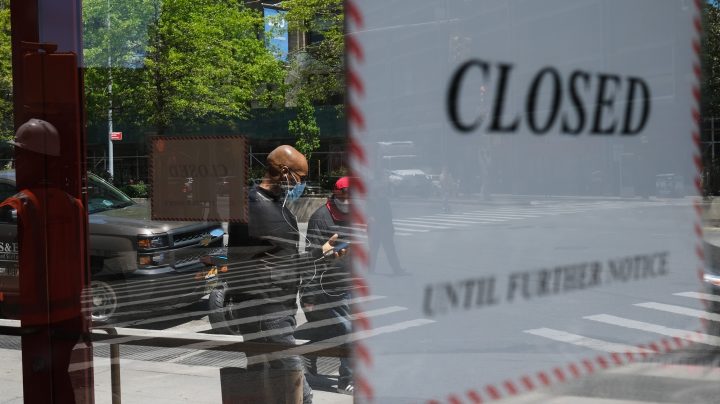
On Friday, there was a rare and unexpected bit of good news in the May jobs report — the unemployment rate had fallen, to 13.3%.
But there was a caveat, one that’s gotten a lot of attention in the last few days: a number of workers had been mistakenly classified as “employed but absent from work due to ‘other reasons’” who should have been classified as “unemployed on temporary layoff,” the Bureau of Labor Statistics wrote in a note at the bottom of the report.
If those workers had been classified correctly, the note said, “the overall unemployment rate would have been about 3 percentage points higher than reported.”
That would put the May unemployment rate at 16.3%, not 13.3%. Similar misclassifications happened in the April and March reports, too.
In April, the unemployment rate would have been 19.7% rather than 14.7%. In March, it would have been 5.4% instead of 4.4%.
What to make of the discrepancy?
Primarily, that it has been difficult to figure out how to count people who are not working because of COVID-19, according to Betsey Stevenson, a professor of public policy and economics at the University of Michigan.
In other scenarios where people are temporarily out of work and not being paid — say, during a federal government shutdown — the BLS classifies them as “employed but absent from work.”
During the pandemic, the question became, how to classify the millions of people who were out of work because of COVID-19 and shelter-in-place orders?
“Should we call them employed but absent from work, or should we count them among the unemployed?” Stevenson said. “The BLS decided it would count them among the unemployed.”
But despite that intention, “I think that interviewers have struggled with these instructions,” she said. “The way the series of questions are asked can lead a person to say, ‘well, no, I have a job, we’re not working right now because we’re waiting for the governor to reopen the state.’”
That has lead to many people being classified as employed but absent from work, rather than on a temporary layoff.
“Realize that the unemployment rate is just a set of self reports,” Stevenson said. “This is the pickle the BLS has got themselves in right now, is that they do not make ad hoc adjustments. They do not go through and say, that person said they were employed, but I think they were unemployed. Let’s move them.”
Instead, they put a note at the bottom of each jobs report explaining the data — and the discrepancies.
“There does seem to be a mistaken notion that this is some kind of interference or some kind of wrongdoing,” Stevenson said. “They’re actually very upfront with the idea that if you want to reclassify these people as unemployed, this is exactly the unemployment rate you would get.”
At the bottom of the May report, the note also said “BLS and the Census Bureau are investigating why this misclassification error continues to occur and are taking additional steps to address the issue.”
There’s a lot happening in the world. Through it all, Marketplace is here for you.
You rely on Marketplace to break down the world’s events and tell you how it affects you in a fact-based, approachable way. We rely on your financial support to keep making that possible.
Your donation today powers the independent journalism that you rely on. For just $5/month, you can help sustain Marketplace so we can keep reporting on the things that matter to you.












